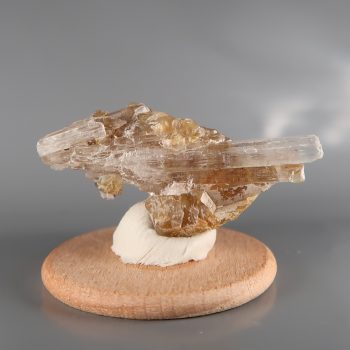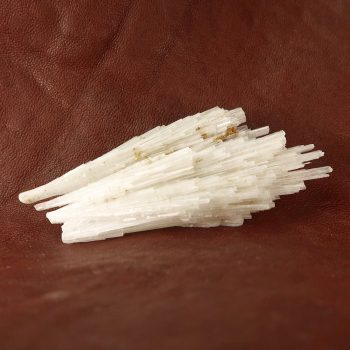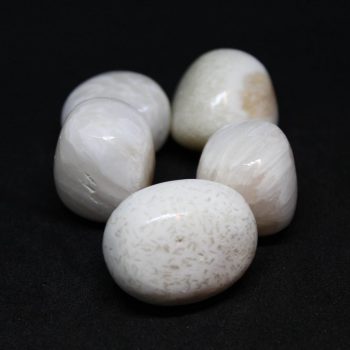Scolecite
Scolecite is a member of the zeolite group and creates gorgeous sprays of radial crystals which are beloved by collectors.
Scolecite is typically white, pink, or colourless and is found around the world, particularly in Iceland, India, and the United States.
Showing all 3 results
-

Scolecite and Calcite specimens
Price range: £8.00 through £10.00 -

Scolecite Clusters
£22.50 -

Scolecite Tumblestones
Price range: £1.50 through £2.50
Appearance, Uses and History
Scolecite is perfect as a mineral specimen, as its unusual crystal formations are beloved by collectors.
Excellent specimens occur in sprays of fine, needle like crystals, and a few other extremely interesting formations.
There are a range of uses for zeolites, including in industry, but not necessarily for scolecite. It is primarily a collectors mineral.
Locales
Scolecite is found in a wide range of locales, with excellent specimens from Brazil, India, Iceland, the UK, and the USA.
Mineralogy
Hazards and Warnings
Almost all rocks, minerals (and, frankly, almost all other substances on earth) can produce toxic dust when cutting, which can cause serious respiratory conditions including silicosis.
When cutting or polishing rocks, minerals, shells, etc, all work should be done wet to minimise the dust, and a suitable respirator or extraction system should be used.
Translations
Arabic:
Hindi:
Portuguese:
- escolecite
Bengali:
Indonesian:
Punjabi:
English:
Italian:
Russian:
- сколецит
French:
- scolécite
Japanese:
Spanish:
- escolecita
German:
Korean:
Thai:
Gujurati:
Mandarin and Traditional Chinese:
Urdu:
